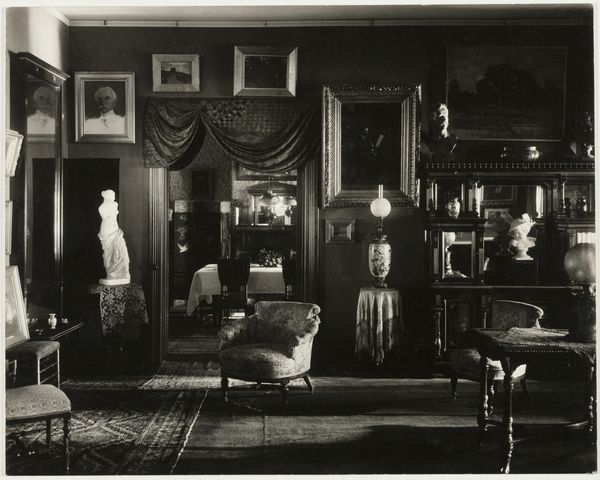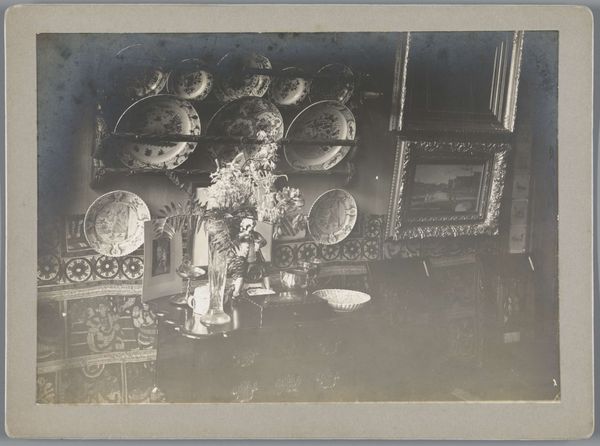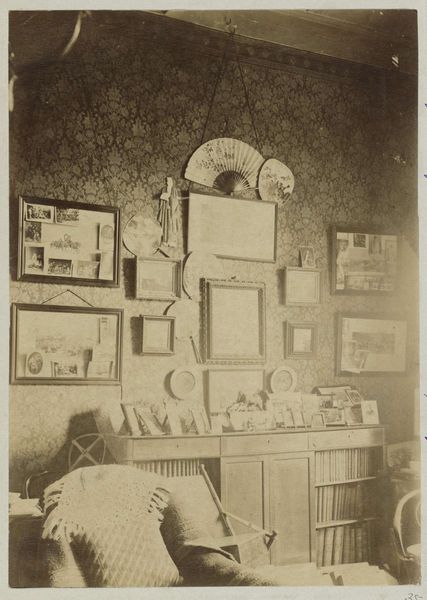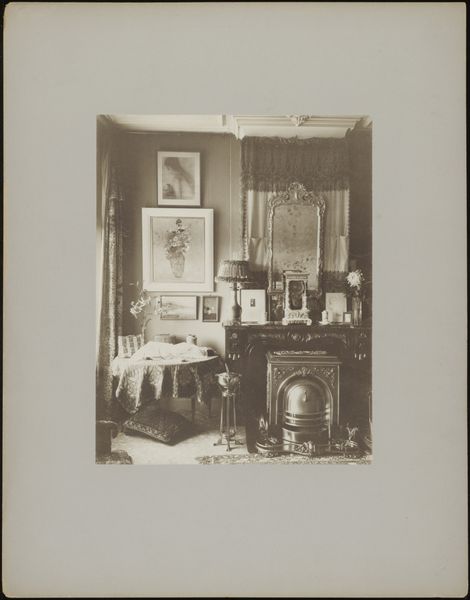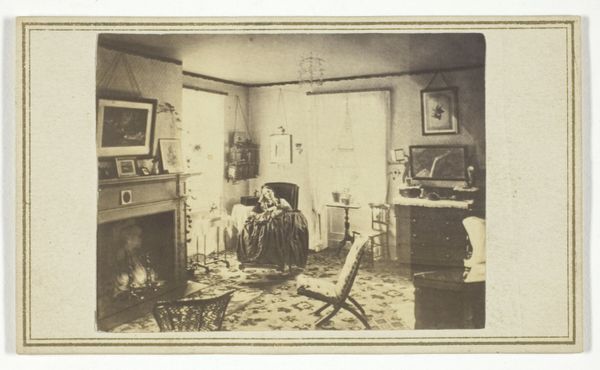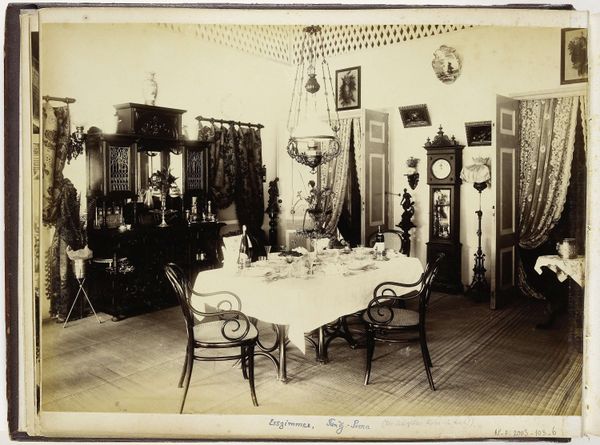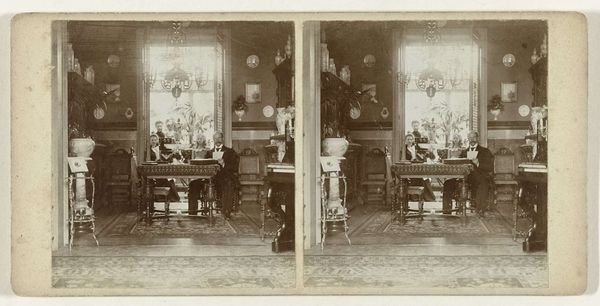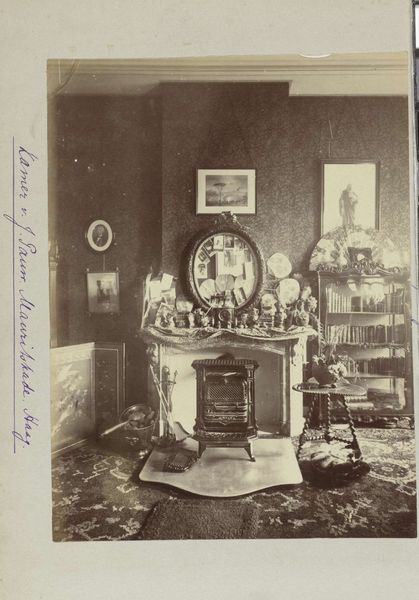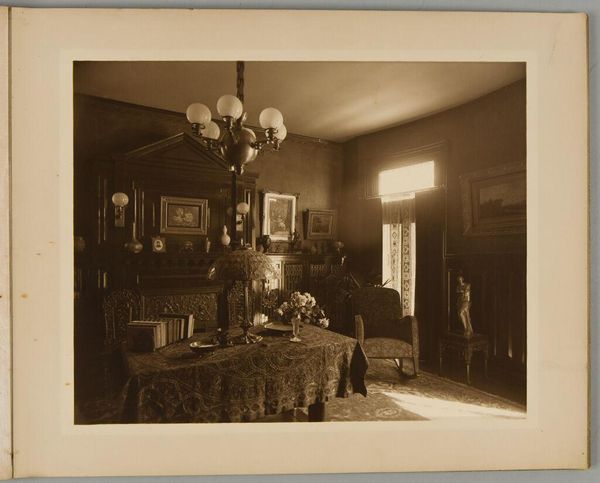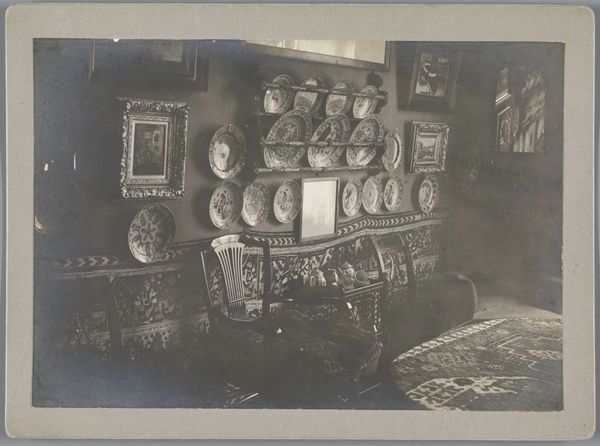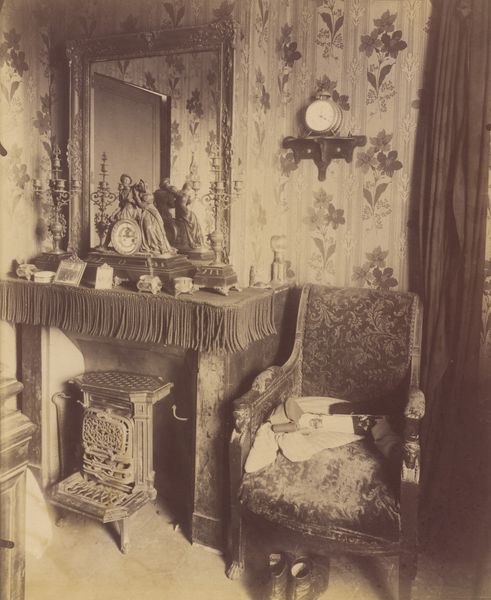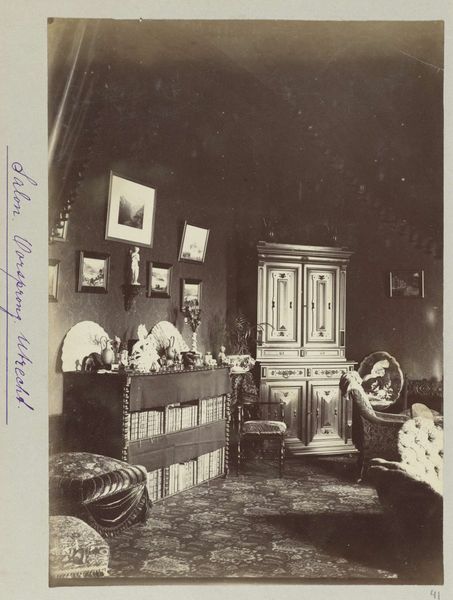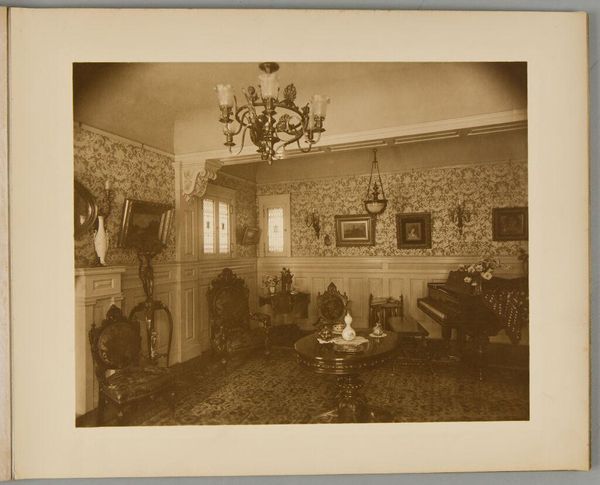
photography
#
film photography
#
impressionism
#
photography
#
genre-painting
Dimensions: height 115 mm, width 128 mm, height 155 mm, width 180 mm
Copyright: Rijks Museum: Open Domain
Curator: Here we have a photograph, "Interieur van het huis van W.H. van Braam in Arnhem," dating from 1880 to 1900. Editor: My first impression is that this is an image steeped in the stifling formality of the era. All the objects seem placed deliberately, creating this really dense visual experience, but perhaps speaks to more than initially meets the eye. Curator: It does. The composition of such domestic interiors reflected the societal emphasis on decorum, display of status, and perhaps above all the role of home as the most vital status of life. Editor: Yes, definitely. And the deliberate arrangement—the patterned carpets, draped fabrics, collections of vases, portraits—suggests not just wealth, but a specific ideology, particularly on the visual construction of domestic respectability during a period defined by stark social inequality. Were such interiors widely accessible or exclusively afforded only for the most privileged members of society? Curator: Precisely. The interiors became important sites to reproduce social power and class divisions. Such visual access was usually possible only within the upper class context, the ability to curate these kind of displays in the home itself became symbolic. Also, consider the context of photography itself. The developing use of images in this period were essential elements in the power-based control of society at large. Editor: It also presents interesting commentary when considering gender norms of the time. Who occupied these spaces, whose domestic expectations and daily performances are framed by the static interiors that are pictured. And even further, to the male figure who apparently occupies these interior, this snapshot offers an expression of interiorized privilege that can then be reflected in socio-cultural discourse. Curator: Indeed. The photograph, in turn, plays into these notions. Photography, nascent during this time, gained societal status because of its indexicality with reality, making images like this valuable tools to support or legitimize that discourse. Editor: It definitely highlights how art can both represent and actively shape these ingrained power dynamics, sparking a wider critical engagement that encourages a reflection upon current aesthetic conventions of power. Curator: A wonderful, multifaceted analysis! This artwork reminds us of photography's integral link with societal power relations, going far beyond just simple pictures of life.
Comments
No comments
Be the first to comment and join the conversation on the ultimate creative platform.
